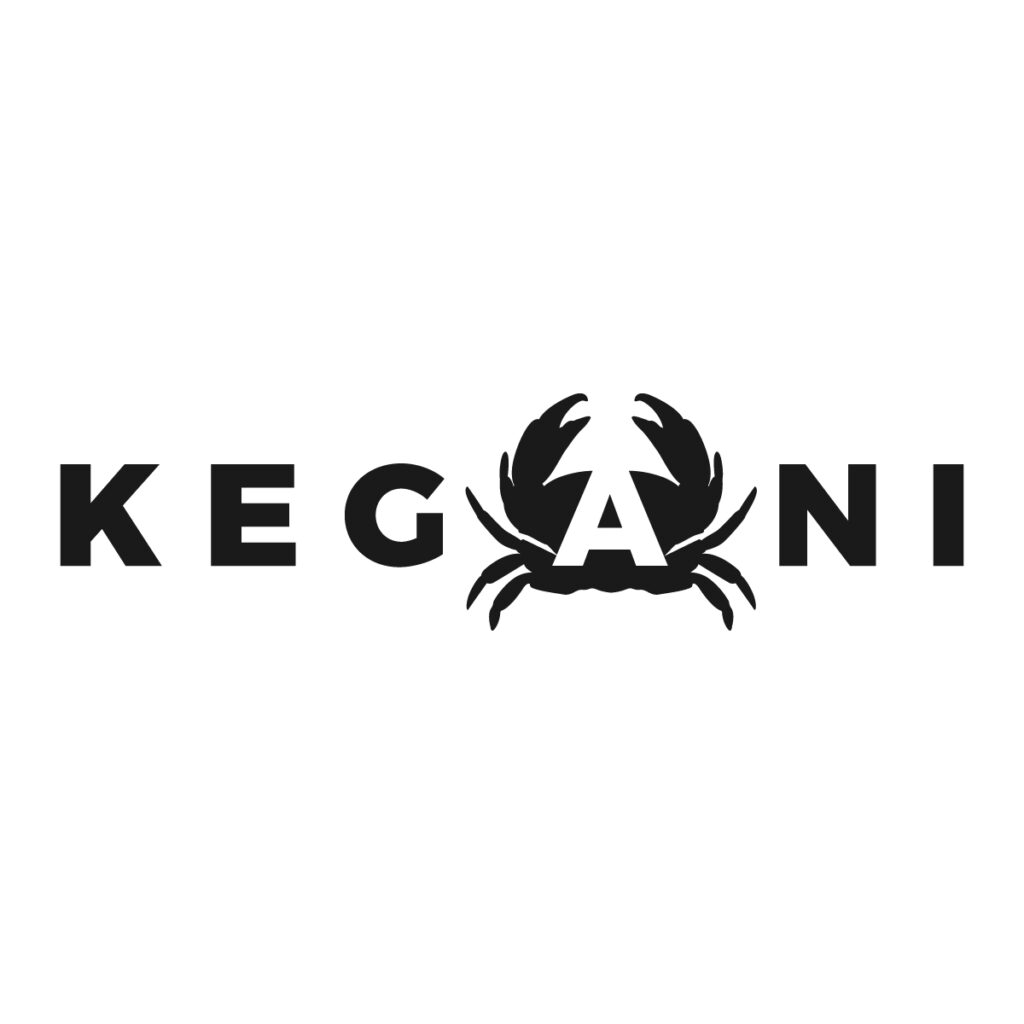Pocket knives are versatile tools that cater to a myriad of tasks, ranging from everyday cutting chores to specialized applications. The design of a pocket knife blade is pivotal to its function, and understanding the different blade shapes can help you select the right knife for your needs. Each blade shape is engineered with specific purposes in mind, offering distinct advantages and drawbacks.
When you’re considering a pocket knife, the choice of blade shape should be guided by the type of cutting tasks you anticipate. For instance, a drop point blade with its sloping spine and strong point is well-suited for general use, making it a popular choice for its versatility. On the other hand, a clip point blade, characterized by its crescent drop on the top edge, provides a sharper and thinner tip for precise cutting and piercing.
Other blade shapes include the tanto blade with its angular profile and reinforced tip, ideal for piercing through tough materials, and the sheepsfoot blade, which has a straight edge and a rounded tip designed for control and safety during cutting. To learn more about the various blade shapes, keep reading!
Drop point
Drop point is a versatile and popular option. The blade’s spine gently slopes from the handle to the tip, creating a slightly convex curve atop the blade. This design provides a strong point that’s less prone to breaking and is ideal for general-purpose tasks.
A drop point blade gives you control during cutting tasks, especially when precision is needed. The large ‘belly’ of the blade allows for easier slicing, making it a go-to choice for hunters preparing game. Moreover, the point is positioned in line with the pivot, giving you better control when using the knife for detailed work.
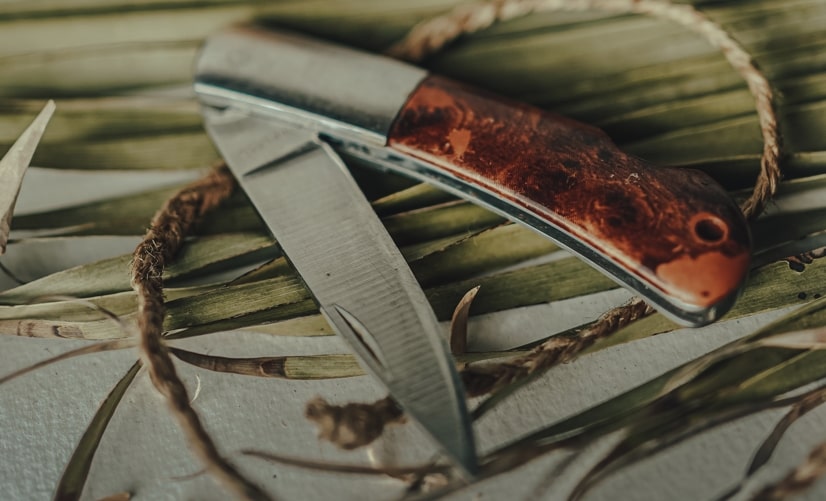
Uses
The drop point blade is an all-around performer, making it suitable for a wide range of tasks. Its versatility shines in everyday scenarios, from opening packages to slicing through materials with ease. The lowered point makes it an excellent choice for precise tasks, such as intricate cutting and detail work. Additionally, the robust design of the drop point blade lends itself well to outdoor activities like camping and hiking, where a reliable and versatile blade is essential. Whether you need a pocket knife for urban or outdoor adventures, the drop point is a dependable choice.
Clip point
When opting for a clip point blade, you’re opting for a versatile design defined by a spine featuring a concave cut-out towards the tip, resulting in a sharper point suitable for precision tasks. This blade type boasts several characteristics. The point is sharper and more defined, facilitating easier piercing. The concave edge near the tip enhances control for precision cutting. The spine, the unsharpened part of the blade, usually extends straight from the handle before curving down towards the point.
Uses
This clip point blade is well-suited for a range of activities. In outdoor pursuits like hunting and camping, its precise control proves advantageous. Similarly, for everyday tasks such as opening packages or cutting small items, the sharp point excels.
Sheepsfoot blade
A Sheepsfoot blade boasts a distinctive profile characterized by a straight edge and a rounded, unsharpened spine curving down to meet the edge at the tip, resembling the shape of a sheep’s hoof from which its name originates. In terms of functionality, it excels in slicing with a smooth, controlled cut, minimizing the risk of accidental piercing due to the absence of a pointed tip.
The design features include a straight edge that maximizes cutting edge contact, a rounded spine serving as a safety feature to reduce puncture risks, and a flat tip providing extra strength for heavy-duty tasks.
Uses
The Sheepsfoot blade finds diverse applications. Its design makes it ideal for achieving a smooth, controlled cut during slicing, effectively minimizing the risk of accidental piercing owing to the absence of a pointed tip.
Start Working with a Professional Now
Wharncliffe
The Wharncliffe blade stands out with its straight cutting edge and a spine that gradually tapers to meet the edge, forming a distinctive stout tip. Praised for its robust tip and the ease of control it provides during precision tasks.
The Wharncliffe’s features include a completely straight cutting edge, making it well-suited for precise slicing and chopping. The gradual taper of the spine adds to its unique design, resulting in a less acutely pointed tip when compared to other blade shapes.
Uses
The Wharncliffe blade serves well in precision cutting tasks, leveraging its straight edge to enable accurate and controlled cuts, making it particularly suitable for activities that demand precision.
Also, in everyday tasks such as opening boxes, cutting cord, or engaging in various hobbyist activities, the Wharncliffe excels. Providing stability and control essential for efficient and accurate cutting.
Cleaver
the cleaver blade shape takes on a compact yet robust form. This design is characterized by a squat, rectangular profile with a straight edge, reminiscent of its larger kitchen counterpart. The cleaver-style pocket knife maintains a thick and heavy blade, ensuring durability in a smaller package. The spine typically runs straight from the handle before curving to meet the edge, providing a strong and reliable cutting surface.
Uses
The cleaver pocket knife is well-suited for a variety of everyday cutting tasks. Its broad blade excels at slicing through materials with precision, making it handy for opening packages, cutting rope, and even handling small food items. The flat surface is advantageous for tasks that require a stable platform, providing control during cutting. While not as specialized as its kitchen counterpart, the cleaver pocket knife brings a unique blend of strength and versatility to everyday cutting needs.
Recurve blade
A recurve blade design features a sweeping curve with the cutting edge curving up towards the spine before dipping back down near the midpoint. This distinctive shape offers several benefits:
- Enhanced cutting ability: The recurve adds extra cutting surface, potentially giving you a longer edge despite the knife’s compact size.
- Improved pull cuts: The curved shape is ideal for performing slicing or “draw cuts,” whereby you pull the edge across the material you’re cutting.
When sharpening your recurve blade, you will need a round or tapered sharpening rod to effectively maintain the curve. The design can be more challenging to sharpen than a straight-edged blade, so patience and practice are necessary.
Uses
- Cutting ropes and fibers: The recurve blade is adept at cutting through tough materials.
- Skinning: The shape can be beneficial for hunters who need to skin game, offering good control.
Kukri
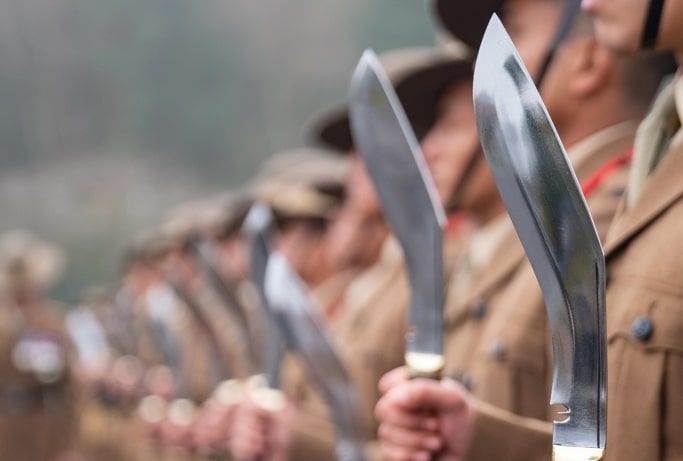
The kukri blade shape is recognized by its distinct recurve and is often associated with the traditional Nepalese knife. You’ll notice the blade is broader near the tip and tapers toward the handle, which provides a forward weight and enables powerful chopping ability. The design is practical for both utility tasks and as a weapon.
Uses
- Cutting through brush or vegetation.
- General utility tasks in an outdoor setting.
- As a combat blade historically favored by Gurkha regiments.
Persian
The Persian blade shape is characterized by its distinctive upswept curve, which brings to mind the classic scimitar. This blade type has a deep belly that is ideal for slicing motions, and the upward curve culminates in a fine, sharp point.
Common uses:
- Slicing or cutting in a draw motion
- Detailed cutting tasks where precision is crucial
Hawksbill
The Hawksbill blade, distinguished by its unique shape, resembles a hawk’s beak. Its pronounced curve towards the spine provides a functional design for specific tasks. The blade curves concavely, ending in a sharp point. It typically has a plain edge, which is sharpened on the concave side. And the downwards point offers control for detailed work.
Uses
- Cutting and Carving: Its shape is ideal for pull cuts or slicing with precision.
- Crafting: You can use it for detailed and intricate crafting tasks.
- Harvesting: The shape can be suitable for harvesting certain crops.
Straight back
Straight back blade is recognized by its flat spine that runs parallel to the blade’s edge. The spine itself remains unsharpened, creating a thick and strong backbone which supports the knife during heavy use. A straight back blade knife will likely have a simple and classic design, with the weight concentrated towards the back of the knife, allowing for enhanced control. It generally does not excel in piercing due to the broad tip but retains excellent chopping capabilities.
Uses
This blade shape offers you a versatile tool that’s well-suited for slicing and general-purpose cutting. Due to the spine’s width, it provides significant strength, making the straight back blade a reliable choice for tasks that require pressure and force.
Tanto/Straight Tanto
The Tanto or Straight Tanto blade shape is inspired by the traditional Japanese short sword, the tanto. It is characterized by a high point and a flat grind, leading to an extremely strong point that is ideal for piercing tough materials. The front edge of the blade is mostly straight, which can provide more control and precision for push cuts.
Uses:
- Tactical applications: Due to its robust nature, Tanto blades are favored in tactical and combat knives.
- Utility tasks: They can handle scoring, scraping, and precision cutting efficiently.
Start Working with a Professional Now
Spear point
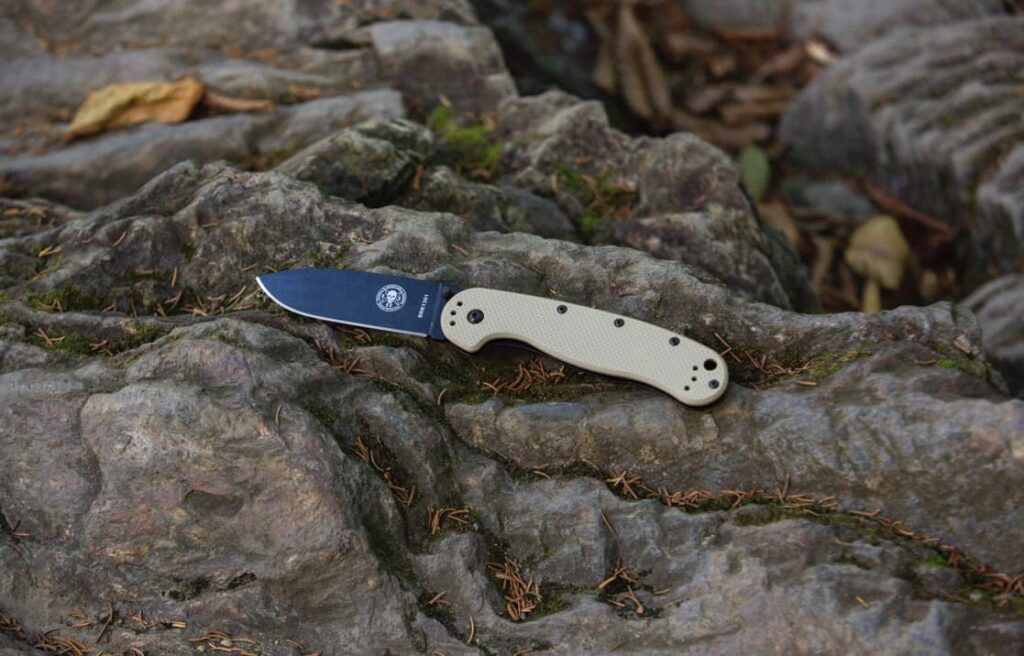
A spear point blade is symmetrical in shape, where both edges of the blade rise and fall equally to create a point aligned with the blade’s center. This shape resembles a spear head, hence its namesake. Your understanding of its features is crucial for proper utilization.
Uses
The spear point’s versatility is notable, often found in both throwing knives and everyday carry (EDC) knives. It’s not the best for slicing due to a lack of belly, but its symmetry makes it a popular choice for combative purposes.
Clip
The Clip blade shape is one of the most popular and versatile blade shapes for pocket knives. Characterized by its curved tip, it provides a point that’s more controllable for precision tasks.
Key features
- Backsweep: The top of the blade “clips” or slopes back, giving an easily identifiable concave cutout.
- Pointed Tip: Offers precise control for detail work, piercing, or slicing in tight spaces.
- Sharp Belly: Ideal for slicing due to the ample cutting surface leading up to the tip.
Uses
- Use the sharp tip for tasks that require fine control, such as whittling.
- When slicing, take advantage of the sharp belly of the blade.
The clip blade has some common variations include the California Clip, with a more pronounced curve, and the Turkish Clip, with a sharper, more angular profile.
Here’s a brief comparison:
| Variation | Curve Shape | Best for |
| Standard Clip | Gentle, standard | General use |
| California Clip | Pronounced curve | More precision |
| Turkish Clip | Angular profile | Aggressive cutting |
Be mindful of the length and the curve of your Clip blade pocket knife, as it will influence its efficiency and appropriateness for specific tasks.
Dagger
When considering a dagger blade, you are looking at a design with a very specific purpose. This type of blade is typically double-edged, meaning both sides are sharpened. The point is often very sharp and centered, which makes it ideal for piercing.
Daggers can be recognized by their symmetrical shape, which extends down the length of the blade. The handle is also designed to offer a solid grip, allowing for precision when used. Although historically associated with combat, contemporary applications can include use as a tool for piercing or cutting in specialized situations.
Uses
Your dagger knife may not be the most versatile option for everyday carry, but its distinctive design is suited for tasks that require precision piercing. It’s important to handle it with respect to its sharp edges and fine point, always observing safety when using or carrying such a knife.
Leaf Shape
When you’re examining pocket knife blade shapes, the leaf shape blade is a distinctive choice. This type of blade bears a strong resemblance to the natural outline of a leaf, hence the name. It typically features a curved spine and belly that come to a point, somewhat resembling a drop point. However, it has its own unique attributes:
- Spine: The spine of a leaf-shaped blade often has a slight curve.
- Belly: Its belly is more pronounced, offering a larger surface area for slicing.
- Tip: The tip is not as pronounced as that of a spear point and generally more centered for balance and control.
- Edge: It’s usually a continual curve, which is excellent for precise cuts and slicing tasks.
Uses
- Slicing: The curved shape is ideal for slicing through materials effortlessly.
- Everyday Use: Its balanced design makes it adept for a variety of everyday tasks.
Modified blades
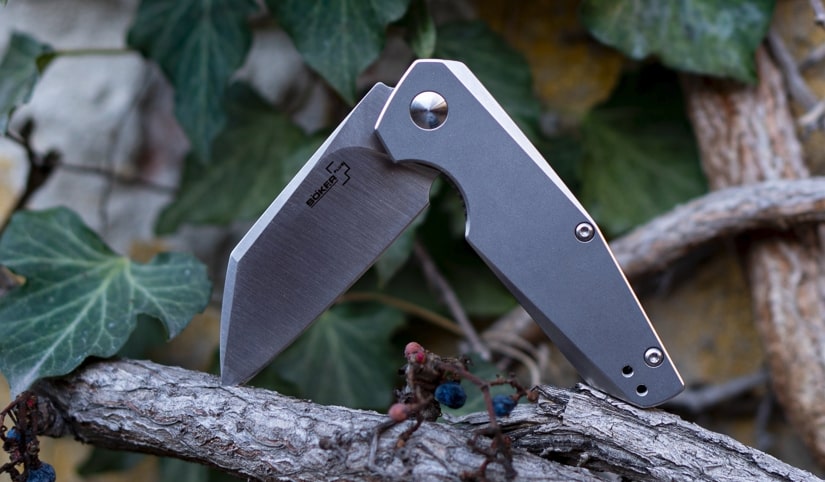
Within pocket knives, specialized and modified blades are crafted to perform specific tasks with greater efficiency. They have unique features suitable for particular purposes. Some of them include:
Gut hook blades: As a hunter, you might find gut hook blades particularly useful. Integrated into the spine of the blade or as a standalone feature, a sharpened hook assists you in field dressing by allowing an incision without puncturing internal organs.
Reverse Tanto blades: Reverse Tanto blades offer a strong, angular point similar to traditional Japanese Tanto blades. This shape provides additional tip strength and control, making it suitable for precise piercing tasks.
Harpoon blades: feature a spine that tapers upward to create a raised point, which adds strength and allows for more controlled cutting, piercing, and even prying tasks.
Start Working with a Professional Now
Blade edge variations
Pocket knife blades can feature different edge styles, each providing distinct cutting capabilities. The two primary types of edges are serrated and straight, while some knives offer a combination of both.
Serrated vs. straight edges
Serrated edges
- Definition: A serrated edge is characterized by a series of sharp teeth or notches along the cutting edge.
- Cutting motion: Best for a sawing motion, allowing you to cut through tougher materials.
- Sharpening: More challenging to sharpen due to individual serrations.
Straight edges
- Definition: A straight edge, also known as a plain edge, has a smooth and uninterrupted sharpened edge.
- Precision: Offers clean and precise cuts, ideal for tasks requiring fine control.
- Sharpening: Easier to sharpen than a serrated edge, and versatile for a range of cutting tasks.
Combination edges
- Design: Features both straight and serrated sections, typically with the serrated edge near the handle and the straight edge towards the tip.
- Versatility: Allows you to enjoy the benefits of both edge types in one blade, making it suitable for diverse cutting tasks.
- Use case: The straight edge is used for push cuts and precision slicing, while the serrated section tackles fibrous and tough materials.
Selecting the right blade shape
When selecting the appropriate blade shape for the production of pocket knives, it is crucial to assess how the shape affects both the knife’s functionality and the user’s experience in carrying it. Your selection of a blade shape should be closely tied to the specific tasks you envision for the pocket knife.
Take into account your customer’s requirements and align the blade shape accordingly. Customizing a pocket knife blade with Kegani is exceptionally simple and straightforward. We have produced a wide range of pocket knife blades, ensuring that we can meet your expectations. Reach out to us today, and let’s collab to discuss business!
